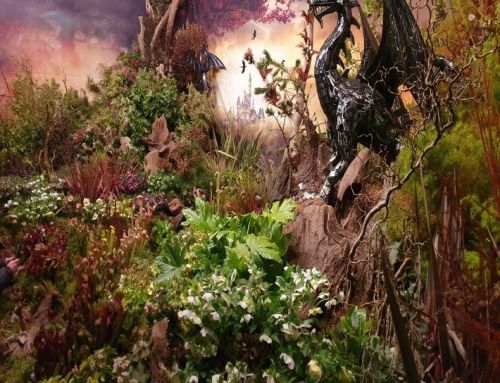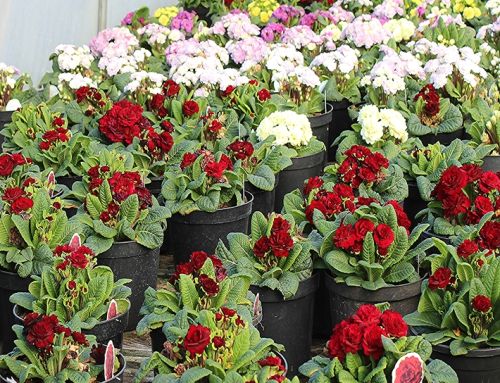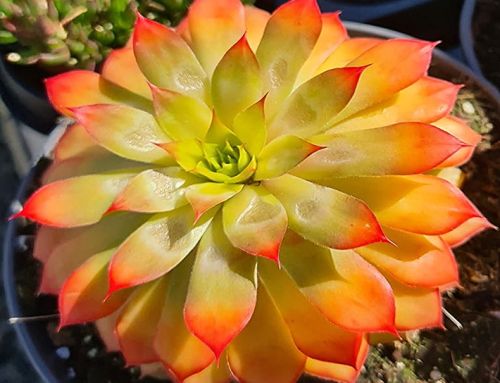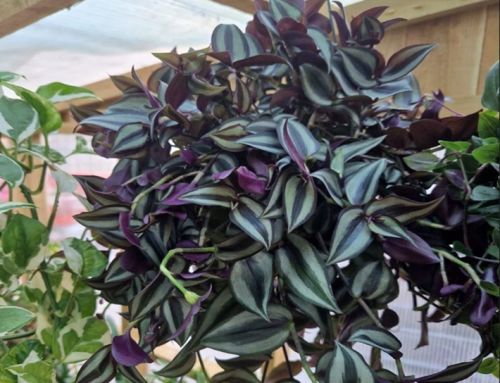Pieris – An all year round wonder!
It can be difficult to know what to plant in your garden to keep it looking nice in summer and winter but I have to say that Pieris seems to tick all the boxes. It adds year round interest. Spring time brings bright red growth and clusters of attractive white bell-shaped flowers. The growth changes colour as it matures changing from red to a subtle pink to cream and eventually green. It has flower buds throughout autumn and winter. Evergreen glossy foliage that looks lovely throughout the year. It is a slow growing and compact shrub which makes it perfect for smaller gardens and can even be grown in large containers. Its versatility allows it to work well in areas of the garden with a woodland feel or in a mixed border or as standalone plant. It is also fairly easy to maintain as long as you have it in the correct soil and aspect
What are its origins?
Pieris is a genus of shrub in the Ericaceae family. It is native to the forested mountain regions of china, Japan and Taiwan and southern Asia primarily but can also be found in North America or Cuba where it’s more commonly known as Andromedas. It is generally known though by its common name of Lily of the Valley Bush, it gets this name as its small white flowers look a little like Lily of the Valley, although some Pieris varieties have pink and red flowers.
In the dappled shade on the mountains in Asia it can grow up to 10 metres, the cultivated varieties are a little more compact reaching heights of 1-4 meters, and as they are slow growing it may take up to 20 years for larger varieties to reach their full height and spread.
Varieties of Pieris.
You will notice that there are several species of Pieris; japonica is the most popular of these species. There are also many varieties of Pieris available, so it is well worth doing a little research before purchasing one, or have a look at the label to make sure you are getting one that is the right size and habit for your garden, as the size can vary greatly. Pieris formosa can grow up to 6m so is more of a tree than a shrub.
Here at the nursery we have got quite excited over Pieris japonica ‘Minor’. ‘Minor’ really is a dwarf Pieris, with a height of about 30-50cms in 10 years. It is a lovely mound forming shrub that requires very little care or pruning. Its flowering time is late winter and spring when it is covered in hanging racemes of small bell-shaped flowers. The growth on this Pieris is so slow that we don’t expect to have this ready for sale for quite a while yet.
Some of our favourites at the nursery are
 Pieris japonica ‘Flaming Silver’
Pieris japonica ‘Flaming Silver’
‘Flaming Silver’ is a beautiful dwarf shrub with striking cream and green variegated foliage. It has clusters of pendulous white ‘Lily-of-the-valley like flowers from February through to April which are followed by stunning bright red new shoots. It needs a peaty soil, and prefers a semi shade site. Height and spread 1m (3’)
‘Katsura’ is a beautiful dwarf shrub with evergreen glossy leaves that provide the perfect foil for clusters of pendulous pale pink ‘Lily-of-the -valley’ like flowers during late winter and early spring. These are followed by stunning deep mahogany new shoots. A plant that needs little care and provides several colour periods, making this an excellent plant for containers and the garden alike. It needs a peaty, humus rich soil. ‘Katsura’ will thrive in sun or partial shade. It will reach a height of 1m (3′) in 10 years.
 Pieris japonica ‘Little Heath’
Pieris japonica ‘Little Heath’
‘Little Heath’ is a charming dwarf evergreen shrub with hanging panicles of pure white flowers complimented by pink new growth during early spring. It is one of the best of the most recent dwarf Pieris with attractively variegated leaves. Its white hanging clusters of flowers are borne Jan-Mar. Needs a peaty soil. ‘Little Heath’ will grow 75-100cms . It is a really classy select shrub.
Requirements of Pieris.
Soil
Pieris are ericaceous and will need acid soil to do well, but if you have alkaline soil in your garden you will need to plant it in a container with ericaceous compost. They go well with other ericaceous plants such as Rhododendrons, Camellias and Azaleas. By adding ericaceous compost to neutral soil you can make it more acid but they will still probably need a yearly mulch of well composted pine needles. Pieris prefer a rich but well drained soil.
Hardiness
Pieris are hardy and will survive the British winter, however be aware of late frosts that can damage new growth in spring time. Covering with a fleece will protect from the late frosts which can nip new growth and flowers. It is suggested to keep it in a sheltered part of the garden as well to protect it from the wind.
Aspect
Strong sunlight can also play havoc with Pieris, scorching its leaves and even preventing it from flowering as abundantly. It is suggested to replicate its natural environment of a partially shaded area that mimics its forest home.
Water
Until your shrub becomes established it will need regular watering. After that it will just need watering during prolonged dry spells. Pieris does not like to be waterlogged.
Feeding
Whether planted in acid soil or in a container it is well worth mulching with a layer of well rotted pine needles annually. In spring your shrub may benefit from a dose of fertiliser, you must use one suitable for ericaceous plants. If you notice yellowing leaves on your Pieris this is sometimes a sign of a nutrient deficiency so again a dose of fertiliser for ericaceous plants will help. Yellowing leaves is also a sign of wrong soil.
Planting
You will need to plant your Pieris to the same depth as it is in the pot and water well until it is established. If you are planting it in a container then choose a pot that is slightly bigger than the one it came in. To aid with drainage add a few shards of terracotta pot in the base of the pot to keep the drainage holes from becoming blocked, as Pieris doesn’t like being waterlogged. Remember to use ericaceous compost. Raising the pot on bricks or stones can also help with drainage. Keep an eye on the watering as plants in pots are particularly susceptible to drying out. As your plant grows you will need to re-pot possibly every couple of years, choose a pot slightly larger than its root ball and add fresh ericaceous compost.
Maintenance
So a dose of ericaceous fertiliser in the spring time will really benefit your Pieris, as well as a mulching of well rotted pine needles to help conserve moisture, prevent weeds, keeps the roots moist and retain the acidity of the soil. By removing faded flowers it will encourage your plant to put its energy into new growth rather than producing seed. Cut off all the stems of old blooms with secateurs.
As Pieris is slow growing it doesn’t need an awful lot of pruning. Just simply remove any dead branches; this should be done just after flowering. If you wish to prune your Pieris to keep its size or improve its shape, don’t prune in summer or autumn as you will not get flowers the following spring, also the pruning will encourage new growth that may become damaged by frosts as it won’t have had enough time to harden before winter. If your plant has become misshapen it can be pruned back hard, this will most likely prevent it from producing flowers for a year or two however this will be compensated for with the fresh coloured foliage of the new growth.
Propagation.
Cuttings
Taking a cutting from your Pieris needs to be done in spring immediately after flowering. The cutting is taken from the softwood. Water the parent plant well a few days prior to taking the cutting and ideally take your cutting early in the day when the stem is full of sap.
You will need approximately a 4” stem that is flexible with young leaves but no flowers from the tip of a healthy branch, and remove at a 45 degree angle with a sharp knife or pruning shears. Remove leaves from the lower part of the stem and dip the base in rooting hormone powder. It is then ready to pot. Prepare a 4” pot of half ericaceous compost and half perlite and firm down. Using a dibber to make a hole and place your cutting in. Firm around it, mist the plant, place a plastic bag over the pot to keep in heat and moisture and secure with an elastic band.
Keep your cutting either in a cold frame or unheated greenhouse or sheltered place in your garden out of direct sunlight. Within 8-10 weeks your cutting should have taken. At this time you should be able to see signs of new growth and possibly roots coming out of the drainage holes in the pot. 2-4 weeks later your cutting will be ready to plant out.
Seeds
If you wish to propagate Pieris from seed this need to be done in spring. Soak the seeds in water for 24 hours. At the end of the 24 hours remove any seed that float to the top as they will not be viable. For propagation of seed you will need a 4” plant pot filled with 3 parts ericaceous compost to one part perlite, and firmed down, about an inch from the top. Sew the seeds on the top and scatter with a thin layer of compost, to allow light to penetrate. Mist with water and cover in a plastic bag secured with an elastic band to retain heat and moisture.
Again place in a cold frame or unheated greenhouse out of direct sunlight. Ensure that they don’t become dry but you also need to make sure they don’t become too wet either as this will cause the seed to rot.
Within 3-4 weeks the seeds should germinate, at this point you can remove the plastic bag. Grow them on until they have several leaves and are about 3” tall. They are now ready for plant out or potting into containers.
Pests and Diseases.
Although Pieris is hardy it is not immune to pests and diseases, look out for discolouration of leaves, dead patches or blemishes. Potential problems could be
Pieris Lace Bug
The lace bug will suck sap from a Pieris which leads to the leaves becoming mottled and pale, they also leave their excrement behind which isn’t very pleasant. A small infestation shouldn’t cause too much of a problem but a large infestation will need to be treated with pesticides. Avoid treating them during flowering as this will harm any pollinating insects as well.
Phytophthora Root Rot
The name of this disease translates directly from Greek to plant destruction; this in itself paints a stark picture. Microscopic organisms will cause the roots of your plant to rot and decay, the leaves will become dull and yellow or sometimes purplish. The most reliable way to avoid the risk of infection is good drainage. Do not allow your plant to become waterlogged or left in standing water. Unfortunately it is recommended that the plant is destroyed.
Fungal Leaf Spot
Brown spots appear on the leaves of your plant gradually increasing until most of the leaf is brown and drops off. To prevent this, keep the foliage of your plant as dry as possible and with plenty of air as Fungal Leaf Spot thrives in warm, moist, humid conditions. Water your plant at the base as opposed to the foliage and do it early in the day so that if the foliage gets wet they have a chance to dry. Remove weeds from the vicinity of the base of your plant and avoid overcrowding. This fungus can be treated with a product containing copper octanate or sulphur, or also a mild solution of bicarbonate of soda and water (approximately ½ teaspoon of bicarbonate of soda to every gallon of water). Chemical fungal sprays are also available.
I hope that I have been able to share with you enough information for you to feel confident that you can plant a Pieris in your garden, it has a few basic needs that are easily met, and the rewards of its year round interest and lovely colours that it will bring to your outdoor space are well worth it.







